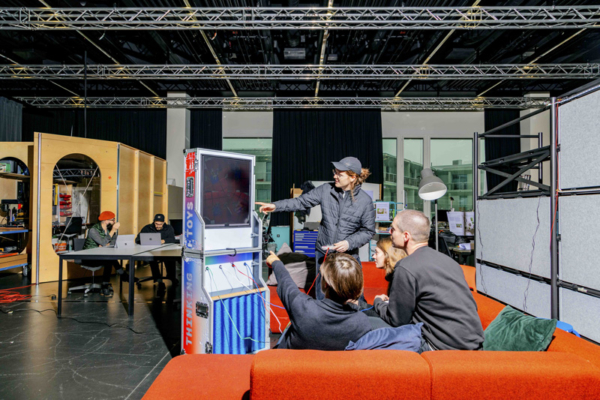
As I embark on planning and working across the school of Art and Design to co-develop a new future-oriented, practice-focused contextual studies module, I am re-posting this blog I originally wrote in 2019 written as I was teaching at Goldsmiths, University of London and undertaking a PhD.
*
How to model contemporary arts teaching after contemporary art, and after the marketisation of universities means that students expect authentically delivered, authentically now content?
The skill of teaching is not simply in having the right content, or being able to speak for or from it, but in how you create the conditions in which to learn.
This feels pertinent to a system in which a) universities are marketised, and marketed as places in which a student-customer is given access to a set of resources they themselves activate and take with them into employment; and b) where the student teacher situation must be defined as one in which the teacher can be favourably indexed against that content — can speak authentically from it.
While it is crucial that a teacher can be sensitive to the specificities of each subject, topic, and student, this should be addresses in their skill and ability to created adequate and respectful learning situations for all involved, not only by their ability or capacity to speak from them. Again this is not to challenge the right to claim a set of material or content as a group not represented for instance, but to challenge the way in which university education is positioned as a format of content provision. This makes both the teacher’s job, and the university’s capacity to be responsive to (and ultimately this means keeping happy) student’s demands on that content. This is by its nature indeterminate, increasingly difficult. This indeterminacy would be fine were teaching simply about content delivery; but it is clearly not: being both a social situation and one in which information is put into and thought through a context.
To be sure this must be part of the terms set out by the teacher, but it must also be reflected in the model by which education happens. That is to say that the university — and the labour performed within it — is not simply rendered as an infrastructure through which information is delivered, but a space in which to model knowledge as a social form. (This is not simply an aspiration, shaping knowledge as a tool for a later career is the social form that is expected and accounted for.)
A more appropriate infrastructure might be one which makes the necessary resources both available and flexibly deployable. This would mean steering the infrastructure away from the delivery of content types — here I am thinking of the ubiquitous multi-functional display pods in every classroom — and instead making time, money and space resources that can be put to use according to the evolving needs and scenarios of teaching. The physical or stable infrastructure of the university (a time constraint, location, accreditation, future) would need to be lean, and the abstract and resource infrastructures of teaching which plug into this would be thicker and more plentiful. Rather than being defined completely by top-down constraints on classroom activity according to successful, countable content delivery, this would mean constraints are the means by which flexible projects access the basic infrastructure. That is, in order to be formally indeterminate, a project reaches certain standards and outcomes, but how it does this can be much more flexible. This is essentially the previous model, but attempts to retrofit the current infrastructure to be able to be judged on its ability to be formally rather than content-indeterminate.
(image source: modular teaching architecture, HGK, Critical Media Lab, Basel: https://criticalmedialab.ch/agenda/)